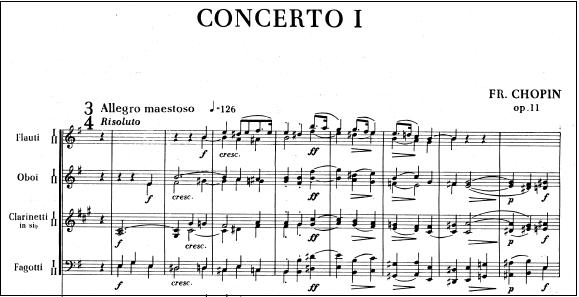Final Stage
Bunin played below tune of chopin at Final Stage of Chopin Competition.
-
Chopin Piano Concerto No. 1 op.11
The Piano Concerto No. 1 in E minor, Op. 11, by the Polish composer Fr?d?ric Chopin was composed in 1830.
It was first performed on 11 October of that year, in Warsaw, with the composer as soloist, during one of his "farewell" concerts before leaving Poland.
The concerto is scored for solo piano, pairs of flutes, oboes, clarinets, and bassoons, 4 horns, 2 trumpets, tenor trombone, timpani and strings.
It contains the three movements typical of instrumental concertos of the period:
1.Allegro maestoso
2.Romance - Larghetto
3.Rondo - Vivace
Classical critics usually fall into one of two schools of thought concerning the piece.
The first of these says that, given that Chopin was a composer for the piano first and foremost, the orchestral part of this piece acts more as a vehicle for the pianist, with the individual instrumental parts being uninteresting to perform.
The second suggests that the orchestral backing is carefully and deliberately written to fit in with the sound of the piano, and that the simplicity of arrangement is in deliberate contrast to the complexity of the harmony.
Chopin preferred to use unusual modulations in his expositions. For example, in the first movement, the exposition modulates to the parallel major, i-I, instead of the expected i-III.
In fact, the Romance is the only movement where the second theme of the exposition fits the classical model of modulating to the dominant (I-V), although even there, when the second theme returns, it modulates to the mediant (III).



